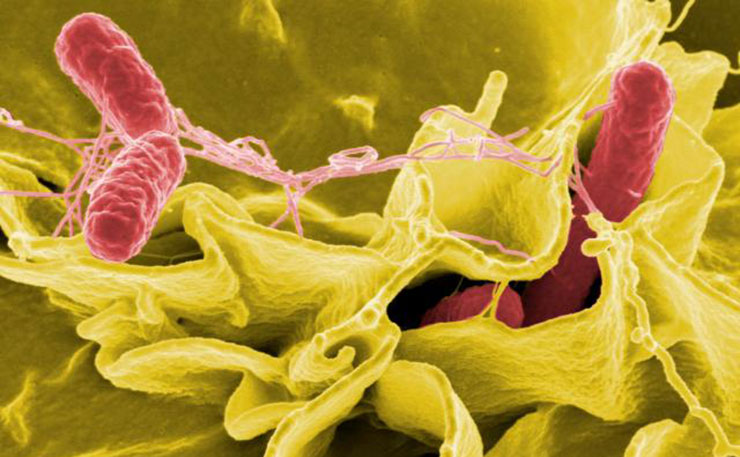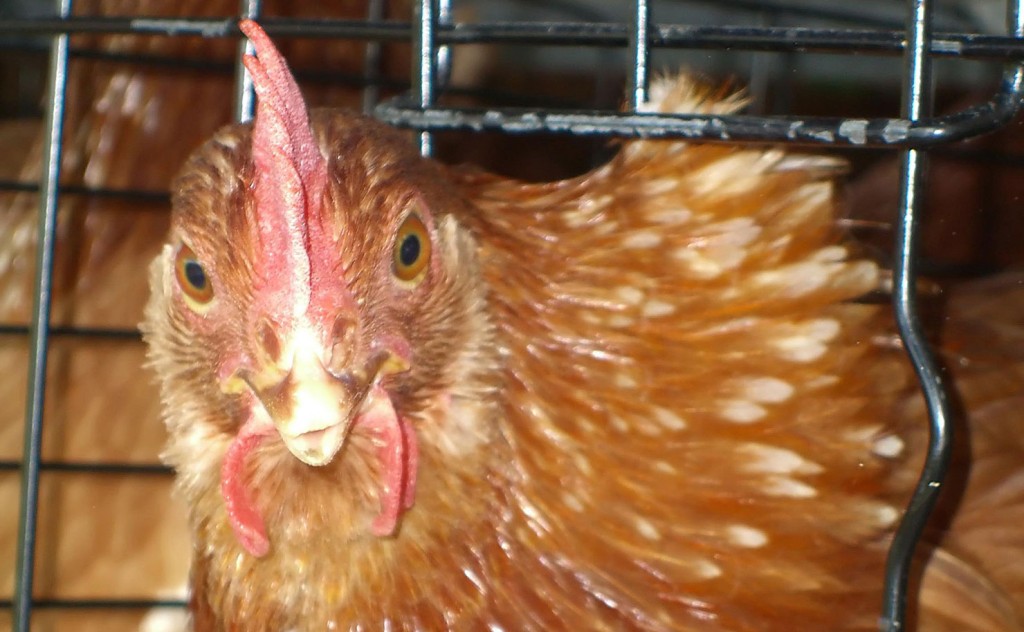ANALYSIS: Geoff Russell breaks down the other side of this week’s Salmonella outbreak, which has made a lot of Australians pretty sick.
Lettuce and other leafy green vegetables have been getting a bum rap during the past week or two over a Salmonella outbreak, but I’ve not seen a single mention of the root cause… and it isn’t the lettuce.
Salmonella comes from animal guts. All over the country, livestock and factory farms contaminate water by the millions and billions of litres, and from time to time some plant food producer fails to adequately protect their product against a pollutant that should be dealt with at its source.
This contamination wouldn’t be possible if the meat industry dealt with its waste as well as, for example, the nuclear industry; but it doesn’t.
There’s plenty at stake, including a sizeable export market, but the industry which caused the problem isn’t the industry being shamed and blamed.
Not only does meat industry microbial contamination poison plant foods and kill or sicken people, other types of meat industry pollution cause algal blooms, ocean dead zones and a raft of other problems; including being the major source of damage to the Great Barrier Reef.
Often the microbes aren’t confined to waste but delivered on and in the meat to your supermarket or restaurant. There’s a really good reason why most people’s kitchen sink contains more nasty bacteria than their toilet bowel; because people defrost chicken on the former rather than the latter.
Animal industry waste and contamination is responsible for virtually all of the 4 million cases of food poisoning annually in Australia, including some 70+ deaths. The standout exception is some 3,300 cases of Bacillus cereus poisoning from rice; rarely serious, but frequently miserable.

It’s worth discussing how this happens, because its easily avoided and a fascinating demonstration of how complex bacterial life cycles can be.
Rice can be contaminated by spores of Bacillus cereus. You won’t see it but it can be in the bag when you buy it. What’s a spore? A bacterial spore isn’t a fungal spore, it’s just a really tough armour plating on the outside of the bacterium that can survive damn near anything, including any rice cooker you throw at it.
If you cook the rice and eat it, all is well. The spores are harmless. But leave the rice to stand at temperatures between about 10 and 50 degrees C, and the bacteria transform and begin breeding; generating some nasty toxins along the way.
The bacteria particles can double every 30 minutes or so, so after 6 to 8 hours, you have plenty of bacteria and toxins. Recooking has no effect on the toxins; they’ll still give you nausea, vomiting and diarrhea. The good news is that serious illness is rare.
Salmonella, on the other hand, is far more likely to cause a serious illness, particularly in children, and health authorities are quite right to track down the nearest link on the causal chain from microbe to illness and make sure it gets fixed.
In this latest case, the problem happened to be a leafy greens packing plant. But the root cause will be the fecal slurry emanating from a piggery, chicken shed, or cattle feedlot. I just hope that everybody affected by the current outbreak adds up their expenses and bills the industry actually responsible for breeding and spreading the pathogenic microbes.
For decades these industries have been getting a free ride courtesy of a substantial health infrastructure devoted to dealing with the fallout from their operations.
The use of manure or waste water not rendered safe by the industry which produced it can lead to some pretty nasty and surprising problems.
In the US, researchers investigating tomato food poisonings found some years back that one Salmonella species had evolved a trick to enter into tomato plants and effectively hibernate inside tomatoes.
Normally when you remove Salmonella from its natural home in the animal’s gut, its days are numbered. But keep doing something long and often enough and the wonders of evolution might deliver you a few bacteria who get good at something we really don’t want. And Salmonella inside tomatoes is one of those; because it means washing won’t work.

Something similar can happen with bean sprouts. Salmonella (like E. coli) can survive on the seeds and then multiply in the same moist warm conditions which are used to promote sprouting.
I can’t discuss Salmonella without mentioning typhoid. Confusingly, it’s just another name for Salmonella poisoning, and it has nothing to do with meat production; the type of Salmonella involved only infects us.
Typhoid usually arises from improper treatment of our own gut waste. If faeces from an infected person makes its way into a water supply… people get sick. Poor human waste handling is still common globally and quite deadly; typhoid kills about 160,000 people a year.
First world sewage treatment and plumbing renders typhoid rare in places like Australia, except in returning travellers, and it shows what the meat industry could achieve if it valued your health as much as your money or if human waste treatment standards were applied to animal waste.
In the food poisoning pantheon, Salmonella has a couple of big mates: Escherichia coli (usually just called E. coli), and Campylobacter. The other big foodborne nasty is norovirus … think oysters; but I won’t discuss norovirus here.
All of the big three come from animal products: meat, eggs and dairy. All have a variety of forms ranging from those that make you feel horrid for a few days to nasty little buggers which can put you in hospital with serious long-term consequences.
An over reaction to these bacterial infections on the part of your immune system can give you joint damage (arthritis) or nerve damage (Guillain-Barré Syndrome) or perhaps irritable bowel syndrome; and the serious forms can also kill.
I don’t mean can also kill in the sense of being possible but never actually happening. Food borne diseases actually kill people an estimated 350,000 globally (and as mentioned earlier, 70+ in Australia) per year. That wasn’t a typo … 350,000 is the WHO’s best estimate of global annual food poisoning deaths.
Australia has an excellent food supply and our health authorities know their stuff. If all the planet had our rate of food poisoning, there’d only be a mere 22,000 deaths annually. Nevertheless, 4 million illnesses and 31,000 hospitalisations a year in Australia is still a serious problem, and it’s only fair the right culprit is fingered; the lettuce was framed.

It isn’t just the waste from factory farms which poisons and kill people, but the farms themselves are seemingly purpose built to breed new and more virulent diseases.
Confine animals in conditions which weaken their immune system and allow a cycle of reinfection and the results are predictable. Add in antibiotic use to control recurrent diseases and the problems get worse.
As far back as 2007, two years before the potent mix of poultry, pig and human influenzas gave us Swine flu, World Health Organisation director general Margaret Chan warned: “The intensity of poultry farming is such that we really need to look at how the human animal interface is managed. It should not come as a surprise that we are seeing more and more disease outbreaks coming from the animal sector.”
A recent Australian report noted that 75 percent of new infectious diseases over the past 30 years have originated in animals.
That report was into antibiotic resistance… a whole new bucket of taipans.
Donate To New Matilda
New Matilda is a small, independent media outlet. We survive through reader contributions, and never losing a lawsuit. If you got something from this article, giving something back helps us to continue speaking truth to power. Every little bit counts.





